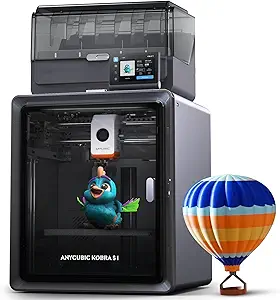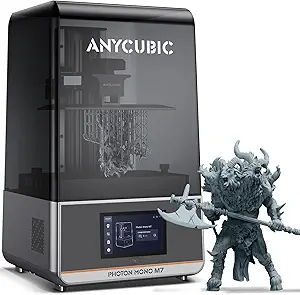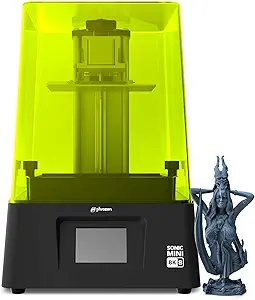Jewelry making has always been an art of precision and creativity. Traditionally, it required specialized tools, molds, and years of practice. But today, 3D printers for jewelry making at home allow hobbyists, designers, and even small business owners to craft intricate rings, pendants, and earrings with professional quality—all from their desks.
Whether you want to prototype unique designs, create wax molds for casting, or even produce finished resin jewelry, the right 3D printer can transform your ideas into reality.
In this guide, we’ll explore the best types of 3D printers for jewelry making, key features to consider, and top-rated brands you can buy.
Why Use a 3D Printer for Jewelry?
3D printing in jewelry isn’t just about convenience—it changes how designs are created and tested:
- Intricate detail: 3D printers, especially resin printers, can reproduce fine patterns that are difficult to hand carve.
- Customization: You can design one-of-a-kind rings or necklaces tailored to a customer or yourself.
- Fast prototyping: Quickly test different design iterations before casting.
- Cost savings: Eliminate the need for expensive molds until you’re ready for final production.
- Materials flexibility: Print directly with resins or produce wax molds for lost-wax casting.
Types of 3D Printers for Jewelry Making
Not all 3D printers are equal when it comes to jewelry. Here are the most common types used by jewelers and hobbyists:
1. Resin (SLA/DLP/LCD) Printers

- Best for: High detail, small parts, smooth finishes.
- Resin printers use UV light to cure liquid resin layer by layer, producing extremely fine detail.
- Popular brands: Elegoo, Anycubic, Phrozen, Formlabs.
- Use case: Perfect for rings, pendants, and wax-like casting models.
2. FDM (Fused Deposition Modeling) Printers
- Best for: Larger prototypes, budget-friendly projects.
- These printers melt filament and extrude it layer by layer. While they’re affordable, they usually can’t match resin printers for fine detail.
- Popular brands: Creality, Prusa.
- Use case: Good for prototyping larger designs before moving to resin.
3. Wax 3D Printers (Professional)
- Best for: Direct casting via lost-wax method.
- Some high-end resin printers use castable wax resin, producing models that can be burned out of molds.
- Popular brands: Formlabs Castable Resin .
- Use case: Jewelry professionals ready for direct metal casting.
Key Features to Look For in a Jewelry 3D Printer
When choosing a 3D printer for jewelry making at home, consider:
- Print resolution: Look for layer heights of 50 microns or less for smooth, intricate designs.
- Build volume: Jewelry doesn’t require huge space, but ensure the bed fits multiple small pieces at once.
- Resin compatibility: Some printers only use proprietary resins, while others allow third-party castable resins.
- Ease of use: Features like touchscreen controls, Wi-Fi, or slicer software integration matter.
- Support and software: Strong slicer support (like Chitubox or Lychee) helps optimize jewelry models.
Best 3D Printers for Jewelry Making at Home
Here are some of the top-rated models you can buy today for jewelry making.
1. Elegoo Mars 4 Ultra Resin Printer
- Why it’s great: Affordable, reliable, and extremely popular among hobbyists.
- Key features:
- 9K monochrome LCD for high precision.
- Prints with 35-micron resolution.
- Works with standard and castable resins.
- Best for: Beginners and hobbyists who want fine detail without breaking the bank.
👉 Check Elegoo Mars printers on Amazon
2. Anycubic Photon Mono M5s

- Why it’s great: Known for ultra-high resolution and speed.
- Key features:
- 12K monochrome screen for razor-sharp prints.
- Auto-leveling and smart failure detection.
- Supports castable resins for lost-wax jewelry making.
- Best for: Serious hobbyists and small business owners.
👉 Check Anycubic Photon Mono series on Amazon
3. Phrozen Sonic Mini 8K

- Why it’s great: One of the highest-resolution consumer printers available.
- Key features:
- 8K LCD panel for unmatched detail.
- Compact size perfect for jewelry studios.
- Compatible with castable resins for direct casting.
- Best for: Jewelers who need professional-grade detail at home.
👉 Check Phrozen Sonic printers on Amazon
4. Formlabs Form 3+ (Professional Grade)
- Why it’s great: Industry-standard resin printer with dedicated castable resins.
- Key features:
- SLA technology for precision down to 25 microns.
- Specialized Castable Wax 40 Resin.
- Easy workflow with PreForm software.
- Best for: Professionals or home-based jewelry businesses.
👉 Check Formlabs printers on Amazon
5. Creality Ender 3 V3 SE (FDM option)

- Why it’s great: Budget-friendly entry into 3D printing.
- Key features:
- Uses filament (PLA, PETG, etc.).
- Good for prototyping before resin printing.
- Simple to set up and widely supported.
- Best for: Beginners who want to learn before investing in resin printers.
👉 Check Creality Ender printers on Amazon
Best Resins for Jewelry Making
For jewelry, castable resins are the go-to choice if you plan to move from resin prints to metal casting. Here are some popular ones:
- Elegoo Castable Resin – Affordable, burns clean for casting.
- Anycubic Castable UV Resin – Great balance between detail and cost.
- Formlabs Castable Wax Resin 40 – Industry-grade resin for professional jewelers.
- Siraya Tech Cast Resin – Trusted third-party option for high precision.
Jewelry Design Software for 3D Printing
To make the most of your printer, you’ll need 3D modeling software. Popular options include:
- Rhinoceros + MatrixGold (professional jewelry CAD).
- Blender (free, flexible).
- Tinkercad (beginner-friendly).
- ZBrush (great for organic shapes).
Tips for Successful Jewelry 3D Printing at Home
- Choose the right resin: Use castable resin if you plan to do lost-wax casting.
- Post-processing matters: Wash and cure prints properly for durability.
- Print orientation: Tilt small parts to avoid supports damaging details.
- Invest in a curing station: UV curing improves final strength and detail.
- Test small batches: Experiment with settings before committing to full runs.

Leave a Reply